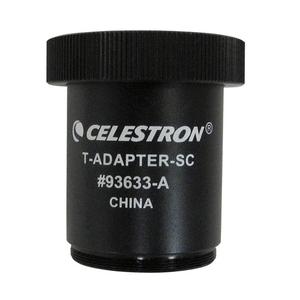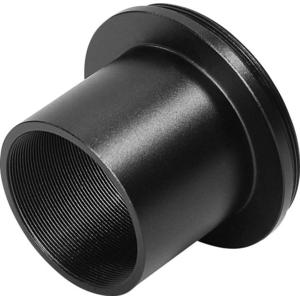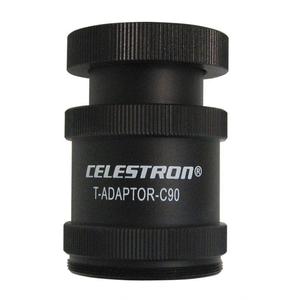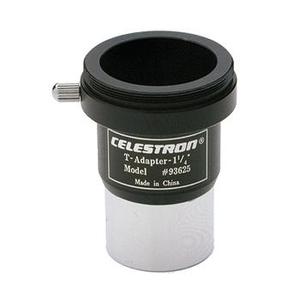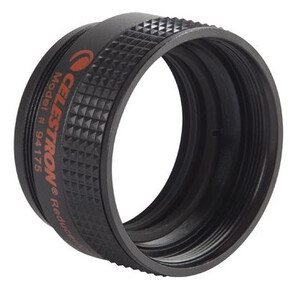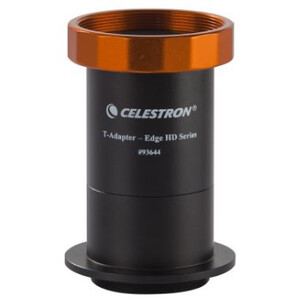Prime focus photography - a T2-ring turns your telescope or spotting scope into a telephoto lens.
The T-adapter is connected to the camera body in place of the camera lens. The camera is then screwed firmly to the telescope. Many telescopes already have a T2 thread (M42x0.75) already built into the focuser and, for other focusers, there are adapters to match the 2" barrel dimensions. The telescope then functions like a fixed aperture telephoto lens with manual focusing, the focal length corresponding to that of the telescope itself. To ensure that your photos are successful, the focuser should be as robust as possible. Focusing is best done on the camera via Live View mode using a bright star. In this way, longer focal length telescopes can also be accurately focused.
All Celestron T2 rings are standardized, so that the flange focal distance is exactly 55.0mm. So this distance is also precisely maintained for other optical accessories - such as field-flatteners or Barlow lenses - so avoiding image errors.
A T-ring is not only useful for connecting a single lens reflex (DSLR) camera to a telescope, but is also suitable for connecting many spotting scopes and eyepieces. For spotting scopes, the camera is not directly connected to the spotting scope, but rather to the eyepiece. So-called eyepiece projection produces higher magnifications and depends only on the magnification of the eyepiece. Direct connection to a spotting scope is not possible, at least not with refractor spotting scopes - usually because it is not possible to bring the camera into focus. Using the eyepiece instead avoids this problem.
40mm T2 extension tubes have proved useful for improving image sharpness and they also have the effect of further increasing the magnification.
The robust screw connection holds even heavy DSLRs safely in place; while for small compact cameras a universal camera holder (for example, Microstage) is sufficient.
